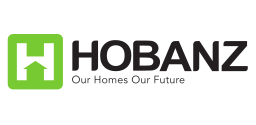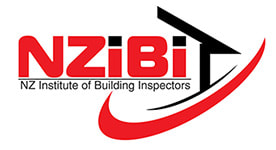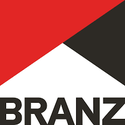|
https://www.consumer.org.nz/articles/pre-purchase-building-inspections Building inspections which fail to pick up serious problems can be catastrophic for home buyers. In 2013 the Wellington High Court awarded damages of more than $200,000 to homeowners who unknowingly bought a leaky home based on a poor-quality inspection report. The judge ruled the inspector had failed to exercise reasonable care and skill and had breached the Fair Trading Act by providing a misleading report. A similar case is making its way through the Auckland High Court. The buyers of a leaky home in St Heliers are suing the sellers of the property and the building inspector who provided a report on behalf of the sellers. It seems the same house or property can receive quite different assessments from private building inspectors. After Wellington was rocked by a sizeable earthquake in August 2013, Julie Watson (not her real name) decided to have her house assessed for earthquake resilience. The inspection identified some urgent fixes – water cylinders had to be strapped to the framing and floor joists had to be fixed more securely to the house piles. However, there was nothing to suggest expensive repairs were needed. Less than a year later Julie’s house was randomly selected for a research project that was investigating the condition of Wellington houses. A private building inspector – but a different one this time – was sent to Julie’s house. Again the cylinders were picked up. But Julie was told half the piles needed replacing. The likely cost of repairs was tens of thousands of dollars. One house, two very different assessments – Julie is left wondering which inspection she should rely on. Key risksRoger Levie, CEO of the not-for-profit Home Owners and Buyers Association of New Zealand (HOBANZ), believes the variable quality of pre-purchase building inspections is a huge problem. He told us he’s often hearing horror stories about buyers relying on reports that were later found to have missed major property defects. Roger’s organisation was originally set up to support homeowners who found themselves with leaky and defective properties. A PricewaterhouseCoopers study from 2009 estimated that between 22,000 and 89,000 dwellings could be leaky homes and less than 10 percent had been repaired. In Roger’s opinion, many of those who have set up shop as building inspectors simply don’t know what to look for when these unrepaired homes are offered for sale. According to Roger, it’s not unusual to see from the photos in these reports glaring defects that have been missed by the inspector. It’s not just the risk of buying an unidentified leaky home that buyers need protection from. Many home owners fail to adequately maintain their houses, which can mean unexpected and expensive repairs for an unsuspecting buyer. In 2010 the Building Research Association of New Zealand (BRANZ) found that only 42 percent of owner-occupied homes had few defects and therefore were in “good or excellent condition”. The majority – 58 percent – had significant defects. BRANZ estimated that the average value of the repairs and maintenance required for these houses was $12,000. BRANZ found that where maintenance had been done, it tended to be interior maintenance and cosmetic with “…less visible things considered to be of lower importance”. These are the type of superficial improvements that can dazzle an unaware buyer. The results for rental properties were even worse, with only 22 percent in good or excellent condition. A key job of the building inspector is to identify areas where maintenance or work has been inadequate.For example, BRANZ found that 32 percent of owner-occupied homes had gaps in their ceiling insulation and in 25 percent of homes the insulation had been poorly installed. BRANZ attributed this to DIY – installing ceiling batts is something owners often do themselves. Consumer protection You can protect yourself against buying an inadequate or misleading building inspection. You should only agree to buy inspections that comply with a “Residential Property Inspection Standard”. This was issued by Standards New Zealand in 2005 (it’s known as NZS4306). Inspectors don’t have to carry out an inspection to NZS4306 but you should insist on it. NZS4306 requires a visual inspection only – it has no invasive tests. It’s basically an extensive checklist covering the interior, exterior, subfloor space and roof space. However, it doesn’t prescribe how a component of the house is to be inspected. Inspectors are also required to have a relevant “technical qualification” but what this means in practice is not defined. HOBANZ is dissatisfied with the standard and is working to develop an alternative approach. While it could be better, NZS4306 does have the benefit that inspectors are required to have professional-indemnity insurance. This gives you added protection. There’s a risk inspectors will claim their reports comply with NZS4306 when they don’t. You should ask for proof that the inspector has professional- indemnity insurance. And check, too, what is and isn’t covered by the policy. Trap for young playersWhen arranging an inspection, make sure the inspection report is addressed to everyone who is relying on it to make a property purchase. This includes family trusts. In August the High Court ruled that an inspector wasn't liable for a misleading inspection report because the property was purchased by the client’s company, not the client herself. This problem would have been avoided had the inspection report been addressed to both the client and her company. Competency signpostsThere is no licensing regime for inspectors – anyone can offer the service. So there’s no guarantee they’ll be good at their job even if they do carry out an inspection that covers all the areas mentioned in NZS4306. But three professional organisations are attempting, through their processes for registering and accrediting members, to help consumers find good-quality inspectors. The NZ Institute of Building Surveyors (NZIBS) offers a registration process for building inspectors. To be registered an inspector must have a relevant building qualification (for example, from the architecture, construction or engineering disciplines), have passed the NZIBS registration exam, be currently providing inspections and have received extra NZIBS training in weather-tightness if they report on that. Each year they must complete additional learning required by NZIBS and have professional-indemnity insurance. There are currently just over 100 registered members throughout New Zealand. Demand for their services is high (they are often involved in weather-tightness court cases and remedial work). So only a few registered members offer pre-purchase home inspections. We counted 20 in Auckland, 5 in Wellington and 10 in the South Island. The core area of business for the Building Officials Institute of New Zealand (BOINZ) is supporting, through ongoing training, local-authority employees who work in the area of building consents. However, since 2007 BOINZ has offered an accreditation process for private building inspectors. The key benefit of this is that BOINZ accredited members must comply with NZS4306. Not only must they provide proof of this to get accreditation, but to remain accredited the inspector must submit reports each year for review. Currently there are just 14 accredited members, but BOINZ says the queue of members applying for accreditation is growing. Accreditation is the key to using BOINZ members: it’s accreditation that signals some minimum level of competency, not membership itself. We’ve seen reports where an inspector has highlighted his BOINZ membership, which was enough to reassure the customer. However, BOINZ only recommends using accredited members, which the inspector wasn’t. The latest arrival is the New Zealand Institute of Building Inspectors (NZIBI). Chief executive Neville Scott says to get NZIBI registration inspectors will need to demonstrate they understand how to undertake an inspection correctly, report their findings in a clear and concise manner, and undergo ongoing professional development. NZIBI currently has 18 members. What to payYou can expect registered or accredited inspectors to be at the higher end of the fee scale for building inspections. This is partly because of the cost of professional-indemnity insurance. Kaizon Ltd has several NZIBS registered inspectors. It told us an inspection of a three-bedroomed weatherboard house in Albany could cost around $890. House buyers can find cheaper options – some as low as $213 for an oral report only. While that’s attractive to buyers who may have to buy reports for several properties,the downside is they’re relying on an inspection which may be wildly inaccurate. Lifting the barMore could be done to improve the quality of inspectors. NZIBS, BOINZ and NZIBI could do this voluntarily – by doing unannounced spot inspections on their members as the Royal Institution of Chartered Surveyors does in the UK. Or they could require more demanding professional development from members. Introducing formal licensing of inspectors is another option. But lifting the bar for inspectors would do little to resolve the practical problems facing consumers. It would do nothing to increase the supply of accurate reports. For that to happen something more fundamental is needed (see “What if …”). We say
1 Comment
4/2/2020 09:43:21 pm
A pre-purchase building inspection is quite simple. It is a non-evasive visual inspection of the building. The purpose of this procedure is also simple. It is done to assure a potential home buyer that they will be buying a house free of any apparent structural damage or problems. It is a house version of "test driving" before buying. What inspectors will be looking for is to see if there are any major damages to the house. After all, nobody wants to buy a house only to find out a few months later a lot of money will need to be spent on repairing or restructuring a house. However there are a few things that need to be understood what a building inspection includes.
Reply
Leave a Reply. |
BLOG
June 2024
Categories |
LocationLocated on Grahams Road, we are right in the centre of Christchurch, making it a lot easier on the whole for people to reach out to us for help at any time during the day. |
|





 RSS Feed
RSS Feed